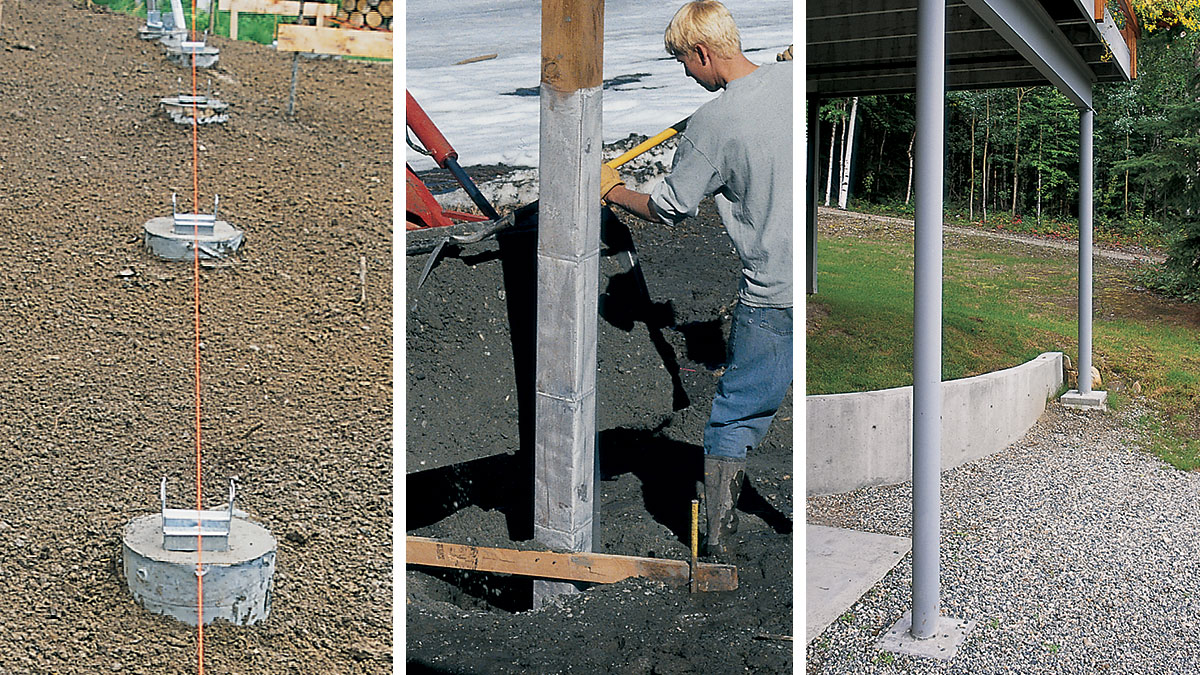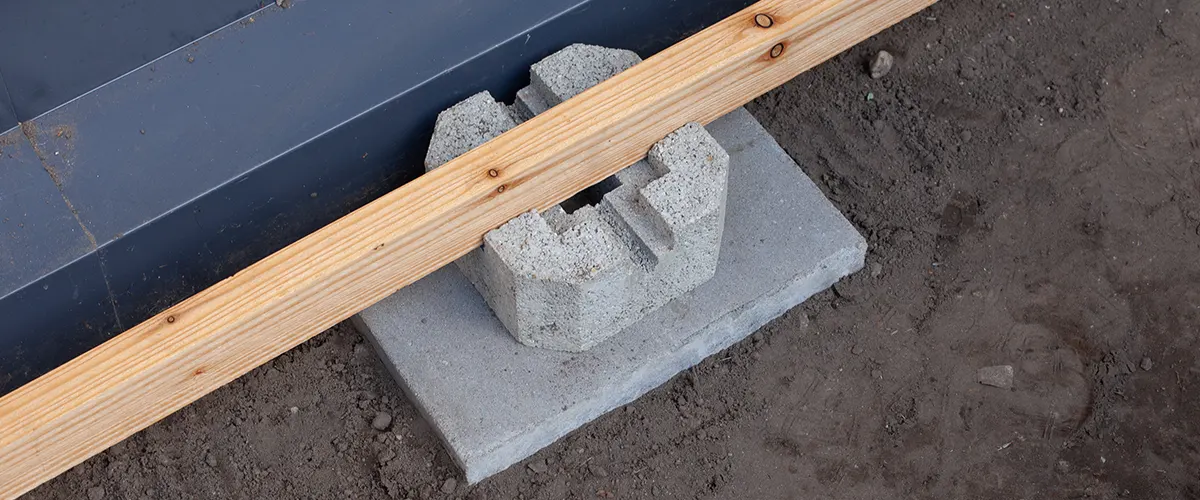Step-by-Step Deck Excellence: Making Certain Stability with Effectively Set Up Deck Footings
Step-by-Step Deck Excellence: Making Certain Stability with Effectively Set Up Deck Footings
Blog Article
Selecting the Right Deck Footings for Security and Toughness
When it comes to building a deck, one of one of the most important choices you will certainly make is picking the ideal footings for stability and durability. The long life and security of your deck depend greatly on the kind of footings you pick, as they supply the crucial support and stability to endure the examination of time. With a myriad of options offered, it can be frustrating to figure out which footings are best suited for your particular demands. In this conversation, we will discover the numerous sorts of deck grounds, consider the important variables to evaluate when making a choice, and look into the benefits and drawbacks of various alternatives. By the end, you will have a more clear understanding of the choices at hand and be better geared up to make an informed choice for your deck project.
Sorts Of Deck Footings
There are several kinds of deck grounds that can be utilized, each offering distinct benefits and factors to consider. One common sort of footing is the concrete pier footing. These grounds include a round hole loaded with concrete, which gives a strong structure for the deck messages. Concrete pier grounds are relatively simple to mount and use exceptional stability, making them a prominent choice for many deck jobs.
These grounds are set up by screwing them right into the ground, which creates a safe foundation for the deck. They additionally allow for very easy adjustment and progressing of the deck if needed.
Conversely, some building contractors select precast concrete footings. These footings are made from durable concrete and be available in different sizes and shapes to fit different deck layouts. Precast concrete grounds are hassle-free to mount and offer a secure base for the deck framework.
Ultimately, another choice is the post-in-anchor footing system. This kind of footing includes driving a metal anchor right into the ground and affixing it to the deck blog post. It offers flexibility in regards to positioning the deck articles and appropriates for decks with lightweight structures.
When choosing the right kind of deck ground, it is vital to think about factors such as soil conditions, deck tons, and neighborhood building regulations (Deck Footings). Consulting with an expert service provider or architectural designer can assist ensure the appropriate ground is selected for a steady and safe deck
Factors to Take Into Consideration When Picking Footings
When choosing the ideal footings for a deck, it is essential to carefully take into consideration different elements such as soil conditions, deck load, and adherence to regional building regulations. These aspects play a significant role in making sure the stability and toughness of the deck structure.
Among the key variables to consider is the dirt problems. The type of dirt on which the deck will be developed determines the kind of footings needed. Decks built on sandy or loosened dirts may require much deeper footings to give appropriate support and prevent settling. On the other hand, decks built on clay or large dirts might call for grounds that can accommodate the soil's tendency to expand and agreement.
Another essential aspect is the deck lots. The weight of the deck, including the materials utilized and any potential real-time lots such as furnishings or celebrations, must be considered when choosing footings. The grounds need to be designed to bear the weight of the deck and distribute it uniformly to stop any kind of structural issues or failures.
Lastly, adherence to local building codes is extremely important. Building regulations vary from region to region, and it is vital to conform with the specific requirements set by the regional authorities. Deck Footings. These codes make certain that the deck is developed securely and fulfills the essential requirements for architectural integrity and load-bearing capacity
Concrete Grounds: Disadvantages and pros

Concrete footings provide several advantages and drawbacks when utilized as the foundation for a deck. On the positive side, concrete footings offer superb security and durability.
Another advantage of concrete grounds is their versatility. They can be poured right into different sizes and shapes to accommodate different deck styles and arrangements. Concrete footings can be personalized to fit the details requirements and demands of the deck framework.
Nonetheless, there are likewise some disadvantages to utilizing concrete footings. This can enhance the overall expense of the deck task and may call for specialist aid.

Helical Piers Vs. Sonotubes: Which Is Much better?
In considering the foundation alternatives for a deck, the contrast between helical piers and sonotubes is essential in identifying the exceptional option. They are turned right into the ground utilizing hydraulic machinery, providing a secure and sturdy foundation for the deck.
The helical plates on the piers create a solid hold with the soil, stopping any type of activity or shifting of the deck. Sonotubes, on the various other hand, depend exclusively on the concrete filling up for security, which may not offer the exact same level of stamina and resistance.
In regards to installment, helical piers are reasonably much easier and faster to set up contrasted to sonotubes. The hydraulic machinery made use of to twist the piers right into the ground makes certain a fast and reliable More about the author process. Sonotubes, on the various other hand, need digging holes and pouring concrete, which can be labor-intensive and taxing.
Furthermore, helical piers are a more versatile choice. They can be made use of in different dirt conditions and can be readjusted or strengthened if required. Sonotubes, on the other hand, may call for added support, such as rebar, in specific soil problems or areas with high load demands.
Choosing the Right Footings for Your Deck's Dimensions
For optimal architectural stability, it is necessary to carefully choose the suitable grounds that align with the measurements of your deck. The dimensions of your deck, including its size, height, and length, play a considerable function in identifying the type and size of footings required.
When picking grounds for your deck, it is crucial to consider the load-bearing capacity of the soil. The weight of the deck, integrated with the weight of any kind of furniture or individuals on it, exerts a considerable force on the grounds (Deck Footings). It is important to pick footings that can adequately support this weight without sinking or moving over time.
Larger decks with higher dimensions call for larger footings to supply enough stability and assistance. The shape of the footings, whether they are rounded or square, depends on the layout and layout of the deck.
Verdict
In conclusion, selecting the appropriate deck footings is crucial for ensuring security and sturdiness. Aspects such as the kind of footings, the deck's measurements, and the pros and disadvantages of various options must be thought about.
These grounds consist of a cylindrical opening filled up with concrete, which supplies a visit their website solid structure for the deck articles. Concrete pier footings are reasonably easy to set up and supply excellent stability, making go them a preferred option for numerous deck tasks.
Precast concrete grounds are practical to install and supply a steady base for the deck framework.
It uses versatility in terms of positioning the deck messages and is appropriate for decks with lightweight structures.
Concrete footings use a number of benefits and disadvantages when made use of as the foundation for a deck.
Report this page